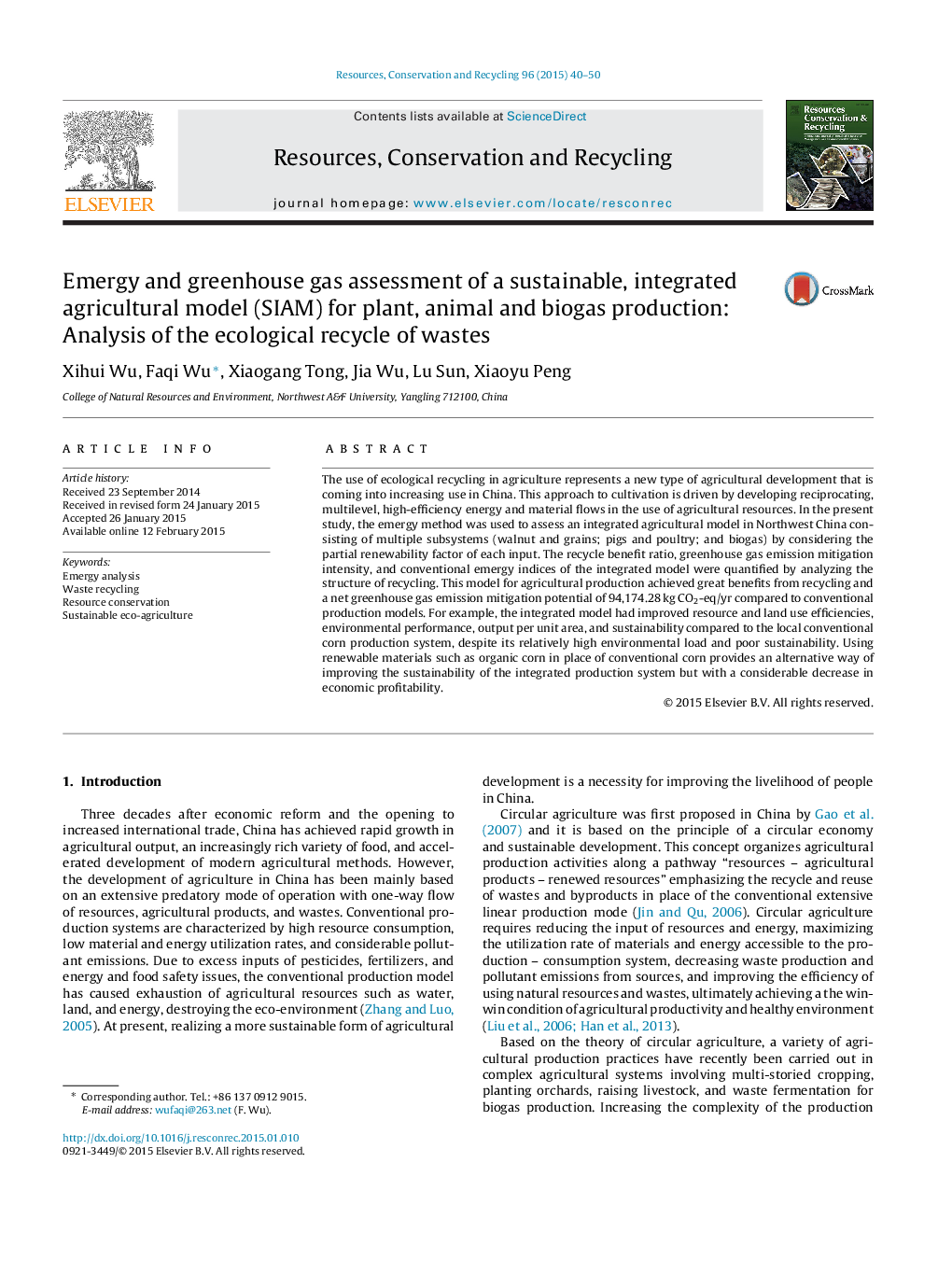| کد مقاله | کد نشریه | سال انتشار | مقاله انگلیسی | نسخه تمام متن |
|---|---|---|---|---|
| 1062841 | 1485693 | 2015 | 11 صفحه PDF | دانلود رایگان |

• A sustainable, integrated agricultural model (SIAM) for plant, animal and biogas production was evaluated.
• The recycle benefit ratio was calculated to analyze the recycle benefits from the use of wastes.
• The greenhouse gas emission mitigation intensity of the SIAM was estimated to be 100 kg CO2-eq/1014 sej.
• The load on the environment and sustainability was improved in the SIAM compared to conventional production.
The use of ecological recycling in agriculture represents a new type of agricultural development that is coming into increasing use in China. This approach to cultivation is driven by developing reciprocating, multilevel, high-efficiency energy and material flows in the use of agricultural resources. In the present study, the emergy method was used to assess an integrated agricultural model in Northwest China consisting of multiple subsystems (walnut and grains; pigs and poultry; and biogas) by considering the partial renewability factor of each input. The recycle benefit ratio, greenhouse gas emission mitigation intensity, and conventional emergy indices of the integrated model were quantified by analyzing the structure of recycling. This model for agricultural production achieved great benefits from recycling and a net greenhouse gas emission mitigation potential of 94,174.28 kg CO2-eq/yr compared to conventional production models. For example, the integrated model had improved resource and land use efficiencies, environmental performance, output per unit area, and sustainability compared to the local conventional corn production system, despite its relatively high environmental load and poor sustainability. Using renewable materials such as organic corn in place of conventional corn provides an alternative way of improving the sustainability of the integrated production system but with a considerable decrease in economic profitability.
Journal: Resources, Conservation and Recycling - Volume 96, March 2015, Pages 40–50